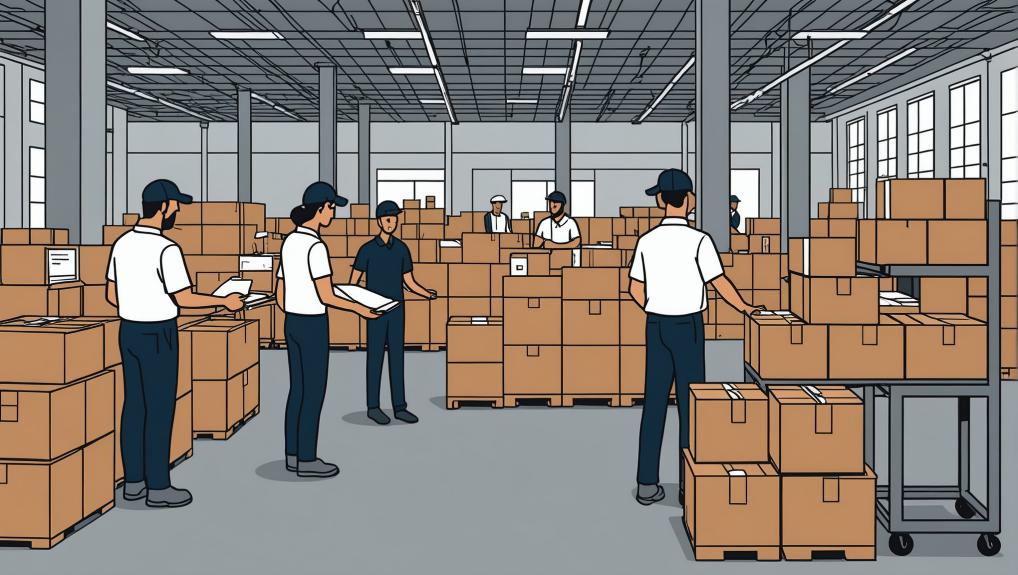Have you ever tracked a package, only to see the status update to “Tendered to Returns Agent” and wondered what it means? You’re not alone. This status can be confusing and raise concerns about where your package is and when it will arrive.
In this article, we’ll break down what “Tendered to Returns Agent” means. We’ll address common pain points like tracking delays and offer practical advice on what steps to take next.
By the end, you’ll have a clear understanding of this process, helping you navigate any package return with ease.
Key Takeaways:
- “Tendered to Returns Agent” means a package has been handed over to another carrier for return to the retailer.
- Tracking updates may pause during this handover, causing temporary delays in package status updates.
- Multiple tracking numbers might be used, so check both the original and new carrier’s tracking systems for updates.
- Contact customer service if the package status remains stagnant for several days to resolve any potential issues.
What Does Tendered to Returns Agent Mean?

‘Tendered to Returns Agent’ means a package has been handed from one carrier to another, specifically for handling returns.
In logistics, ‘tendered’ indicates the transfer of custody. The ‘returns agent’ is the carrier responsible for the next leg of the package’s journey, either back to the sender or retailer.
This process is crucial in eCommerce and retail, where efficient return logistics are vital. For example, a package first managed by USPS might be handed over to FedEx or UPS to complete the return.
Such carrier collaboration, known as intermodal logistics, improves efficiency and ensures timely deliveries.
Understanding this term is important for both senders and recipients. For senders, it means the package is on its way back, having been handed to a returns agent.
For recipients, this status might result from a recall or delivery issues. Knowing the logistics behind ‘tendered to returns agent’ ensures transparency and helps in tracking packages efficiently.
What Should You Do If Your Package Is Tendered to a Returns Agent?
If your package status shows ‘Tendered to Returns Agent,’ follow these steps to ensure its successful return.
First, check for multiple tracking numbers. The return label often includes two tracking numbers: one for the original carrier and another for the returns agent. Use the non-USPS tracking number to track the package with the new carrier.
Next, visit the new carrier’s website and enter the tracking number to monitor the package’s progress and estimated delivery time.
If you encounter issues or delays, contact the original carrier’s customer service. They can provide details about the handover and help connect you with the returns agent.
If USPS handled the initial delivery, visit your local post office. They can offer insights into the handover process or help report the package if it appears stuck.
Why Is My Package Not Updating After Being Tendered to Returns Agent?

If your package isn’t updating after being marked ‘Tendered to Returns Agent,’ it means the tracking responsibility has shifted from the original carrier to a new returns agent.
This typically signifies that the package is now in the hands of the returns agent, who will oversee its journey back to the sender or retailer.
Tracking updates might not be immediate at this stage. The package is now under a different tracking system.
You should look for an additional tracking number corresponding to the new carrier. This number is usually found on the return label or provided by the original carrier.
If tracking information remains stagnant, contact the retailer. Retailers often have more detailed insights into the return process and can provide assistance. They can verify whether they’ve received the package or identify any return process issues.
Delays can occur during the handover process. Patience and proactive communication with both carriers and the retailer will help ensure a smooth resolution to tracking issues.
What Problems Could Arise from a Package Being Tendered to a Returns Agent?
Several issues can arise when a package is marked as ‘Tendered to Returns Agent,’ complicating the return process.
One primary problem is the cessation of tracking updates. When carriers like USPS hand over the package, tracking information often stops, creating confusion and anxiety for the sender.
Delayed processing is another significant concern. Returns agents might take longer to handle packages, which can be problematic if there’s a strict refund or exchange deadline.
Miscommunication between the original carrier and the returns agent can also result in delays or lost packages. If the package isn’t properly scanned during the handover, it might appear to vanish.
Customer service challenges are another hurdle. Since the original carrier no longer manages the package and the returns agent may be difficult to contact, resolving issues can be frustrating.
There’s always a risk of lost packages during the changeover. If the returns agent fails to properly receive or process the package, it might never reach its intended destination, causing considerable inconvenience and potential financial loss.
How Can I Track My Package After It’s Been Tendered?

First, identify any new tracking numbers on the return label. Packages often get a separate tracking number when handed over to a returns agent. This number is crucial for monitoring the package’s progress with the new carrier.
Once you have the new tracking number, go to the website of the carrier now handling your package.
For instance, if your package was initially with USPS but is now with FedEx, use the FedEx tracking tool. Check your order history or email confirmations for any tracking details provided by the retailer or carrier.
If tracking updates are delayed or the package seems stuck, contact customer service for both carriers.
They can give detailed information and help locate your package. Retailers can also help, as they often have systems to track returns and can offer additional support if there are issues.
What happens if the original sender refuses a returned package after being tendered?
If the original sender refuses a returned package after it has been tendered to a returns agent, the package is typically rerouted back to the sender’s warehouse or fulfillment center, often incurring additional shipping costs. This rerouting can lead to several outcomes and issues that require immediate attention.
When a sender refuses a returned package, the logistics company may temporarily store the package. Prolonged refusal without resolution could result in the package being disposed of by the carrier.
Storage fees and extra shipping costs are common, which the sender might need to cover depending on the carrier’s policies and the return distance.
To manage the situation effectively, contact the sender to understand the refusal reason.
Simultaneously, reach out to the carrier handling the return to clarify the package’s current status and the next steps. Monitoring tracking updates is also vital to stay informed and act promptly if issues arise.
Frequently Asked Questions
How Long Does It Usually Take for a Returns Agent to Process a Package?
A returns agent typically processes a package in three to seven days. This duration can vary based on the agent’s efficiency and the volume of returns at that time.
What Should I Do if My Package Is Damaged When Tendered to a Returns Agent?
If your package is damaged when handed to a returns agent, first take clear photographs of the damage. Next, contact the retailer’s customer service for guidance on starting a claim or return process. This ensures your issue is properly addressed.
Conclusion
‘Tendered to returns agent’ means the package has been handed over to a specific handler responsible for processing returns. This step is crucial for effective return management in eCommerce and retail industries.
Although this handoff can lead to brief tracking delays, knowing the process can ease worries. Effective tracking systems and clear policies for handling refused packages ensure smoother returns management. This, in turn, boosts customer satisfaction and operational efficiency.
For instance, Amazon and Walmart use advanced logistics to streamline returns. They ensure packages are quickly processed by returns agents, reducing waiting times and enhancing trust.
Understanding this step helps customers feel more confident about the return process, improving the overall shopping experience.

